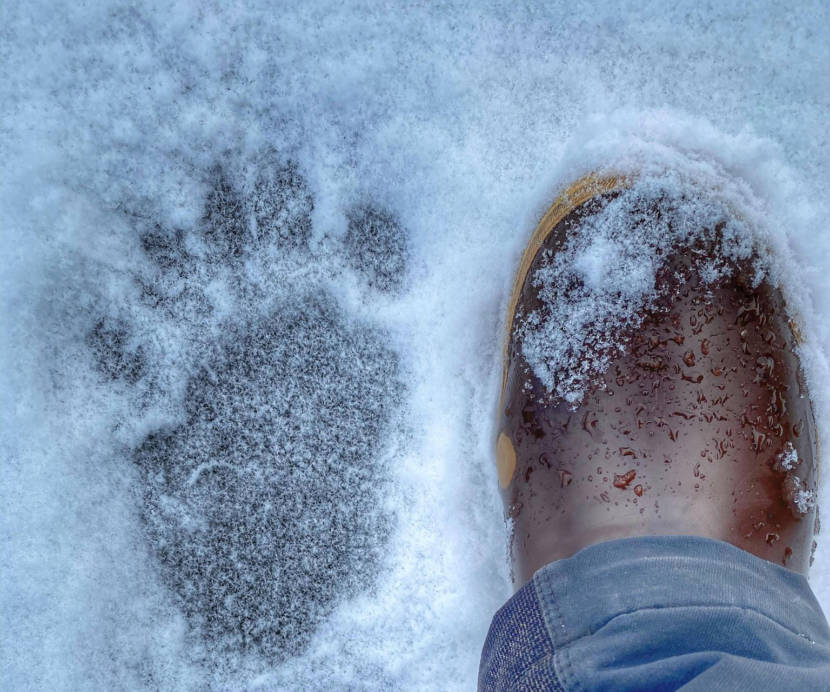
It’s almost mid-November, and there are a few bears still active in the Juneau area. That may seem unusual, but it’s not.
Gloria Soto Llauger checked out her security camera footage just after this month’s first big snow storm. There they were, after 1 o’clock in the morning, slowly ambling across the front of her house and parking area. A big mama black bear trailed by two new cubs of the year.
“The other day they come and they are big bears,” Soto Llauger said. “Mama was super big. The cubs are so cute. And they are very small.”
https://www.facebook.com/100037416232096/videos/356319912291880/
Soto Llauger is not the only one. Other Juneau residents recently posted on social media videos of roaming bears or pictures of prints in the fresh snow.
The Alaska Department of Fish and Game is still getting reports of bears roaming through Juneau neighborhoods looking for food.

Anthony Crupi says it’s not that unusual to still see bears out right now.
“Most bears are probably encouraged to head to the den once resources really become limited and covered in the snow that we received in the last week,” Crupi said.
Crupi is a biologist with Fish and Game, but he focuses on research. He captures bears, puts radio collars on them, collects samples and tracks their movements with trail cameras. The information he collects is crucial for understanding bear biology, behavior and abundance.
Around Halloween or so, Crupi says black bears usually start denning up for winter hibernation.
He says black bears will find a hollow tree or excavate part of the tree’s roots as their den for as much as 3 to 8 months. Their core body temperature, heart rate and metabolism will all drop dramatically. They won’t eat, poop or pee. Crupi says they’re essentially living off of their fat reserves.
And here’s a little known fun fact you may not know about hibernating bears. A fertilized egg in a female bear will delay implantation until she starts hibernation. Whether a mama bear later has a cub or has as many as three cubs can hinge on how healthy she is and much fat she has built up during the summer.
“A bear that doesn’t have enough fat, you could see that those animals wouldn’t survive, their cubs may not be produced or they come out in the spring with really poor body condition,” Crupi said.
This has been a bad year for bears in Juneau. There was less natural food because of lackluster salmon runs and a poor berry crop.
Crupi says that means bears were also looking for food elsewhere, like human garbage. They became conditioned to associate food as a reward for their encounters with humans, knocking over garbage cans and breaking into homes and vehicles.
ADF&G’s Roy Churchwell says they responded to a record total of 19 bears this year. Of those, five bears were physically moved out of town. They put down or killed 11 bears that became a danger to life or property.

“Once they break into cars are something like that, then we really don’t have any other choice than to euthanize them,” Churchwell says.
Meanwhile, Gloria Soto Llauger says she’s seen bears make a mess by going through garbage in her Churchill Park neighborhood in Lemon Creek.
“And this year has been the worst,” Soto Llauger said. “A lot more bears lately.”
But she takes steps like freezing her discarded food until garbage pick-up day. Only then does she put out her garbage can, minutes before the garbage truck arrives.
Her big pro tip, though, is spraying down her garbage can with a eucalyptus-based odor and germ killer called OdoBan which she finds at a big box home improvement store near her neighborhood.
She describes the last time a bear checked out her garbage can after she sprayed it.
“She or he put the can down on the ground, and smelled, got up and left,” Soto Llauger said.
Besides an occasional stroll in front of her house, she says she hasn’t had a single problem with bears since then.